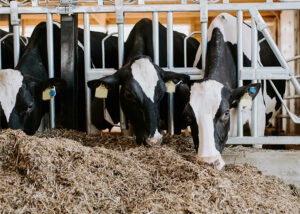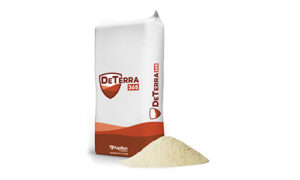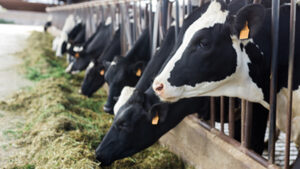The use of feed additives in livestock continues to grow as producers look for ways to support animal health and performance and reduce antibiotic use. Yet confusion still exists about the different categories of feed additives, how they work, when to use them, or how to select a product that benefits the whole herd.
A feed additives primer
Feed additives are non-nutritive compounds that support animal health and performance through immune, endocrine, microbiome, gut health, or receptor modulation. The primary categories of feed additives include prebiotics, probiotics, exogenous enzymes, phytogens or plant-based compounds, organic acids, and novel compounds.
Available feed additives
Prebiotics are generally defined as non-viable food components that confer a benefit to the animal when consumed. Common prebiotics include yeast cell wall or yeast culture. Prebiotics support a healthy microbiome, bind pathogens, and modulate immune function. Yeast culture-based prebiotics have an additional role in supporting rumen pH and optimizing fiber-digesting bacteria in the rumen.
Probiotics, also known as direct-fed microbials, are defined as live organisms that support animal health when consumed. Common probiotics include live bacteria and live yeast. Probiotics have several modes of action including 1) minimizing pathogen colonization in the gut, 2) modulating immune function, 3) increasing gut epithelial barrier integrity, 4) supporting digestion and absorption of nutrients, and 5) modifying the microbiome. The exact mode of action of any probiotic will be driven by species and strain.
Exogenous enzymes are enzymes generally of fungal or bacterial origin that support nutrient digestion. They may physically break down feed or support the rumen microbe’s ability to break down feed by improving bacterial attachment and increasing enzymatic activity of the bacteria.
Phytogens are plant-based compounds such as essential oils, extracts, and tannins that confer a benefit to the animal when applied to or consumed by the animal. They may mitigate pathogens, enhance gut health and nutrient utilization, act as antioxidants, or support immune function.
Organic acids modulate gut pH, promote endogenous enzyme secretion in the gut, and support improvements in intestinal villus height and crypt depth which enhances nutrient utilization and gut health. Furthermore, organic acids inhibit a variety of pathogens, particularly Salmonella, E. coli, and Clostridium, and have immune modulating properties.
In addition to the primary categories covered above, a variety of novel compounds are entering the market. These include things such as high intensity sweetener, quorum sensing materials, egg antibodies, and non-nutritive lipids. The modes of action of novel compounds are variable, but many focus on immune modulation, pathogen control, and animal growth.
How to get the most from feed additives
Although feed additives can be fed stand-alone, due to the complex nature of animal biology it is recommended that a comprehensive blend of additives be fed. In any given livestock operation, animals may be experiencing a variety of conditions leading to immune activation or poor performance.
By using a blend of additives, more conditions will be managed and overall herd health and performance will improve. For example, a product like Dairyman’s Edge® PRO from Papillon Agricultural Company is a comprehensive blend of six bacterial strains, exogenous enzymes, live yeast, and yeast culture aimed at supporting rumen and lower gut health, feed utilization, and farm profitability.
Product selection
The best blend of additives to use in any situation will vary. Common focus areas for additives include immune modulation during periods of stress (such as transport, co-mingling, heat, or weaning), pathogen control, improvements in gut health, improvements in feed utilization, and optimization of animal performance.
When formulating a feed additive to support the immune system, focus on prebiotics, probiotics, and phytogens. These same feed additives, plus organic acids, can also help with pathogen control. Adding exogenous enzymes to the blend can help animals meet the higher energy demands of an activated immune system or get more out of hard to digest feedstuffs. Working with a team that has experience in the feed additive space can provide guidance on the best combination of ingredients for your operation based on your unique needs, challenges, and goals.





